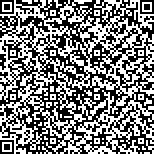下载中心
优秀审稿专家
优秀论文
相关链接
摘要

湿地是地球上最重要的生态系统之一,在维持全球生态环境安全等方面发挥着举足轻重的作用。由于湿地独特的水文特征,传统的湿地监测需要耗费大量的人力和财力,对于大尺度的湿地信息提取更是困难重重。随着大数据和云计算的兴起,为大尺度和长时间序列的空间数据处理提供了契机。本文基于Google Earth Engine(GEE)云平台,使用Sentinel-1合成孔径雷达(SAR)数据、Sentinel-2光学数据以及地形数据,探讨了红边、雷达以及地形特征对大范围区域沼泽湿地提取的重要性,验证了利用JM距离寻找沼泽湿地提取最优特征组合的可行性,结合随机森林算法对2018年黑龙江流域沼泽湿地进行提取。研究表明:(1)Sentinel-2红边波段和Sentinel-1雷达波段以及地形数据有利于沼泽湿地信息提取,相比植被指数和水体指数沼泽的制图精度分别提高了7.56%,5.04%,4.48%;(2)利用JM距离得到的分离度表明,红边特征>其他光学特征>地形特征>雷达特征。进行特征优选后沼泽湿地的制图和用户精度分别提高了1.45%和3.02%,最终结合随机森林算法的总体精度为91.54%,沼泽的提取精度为88.55%。本研究利用GEE云平台和多源遥感数据以及机器学习算法,能够准确、快速、高效地提取大尺度范围沼泽湿地信息,具有较大的应用潜力。
Wetland is an important ecosystem on the planet and plays a pivotal role in maintaining global ecological environment security. Traditional wetland monitoring requires a lot of manpower and financial resources due to the unique hydrological characteristics of wetlands, and extracting large-scale wetland information is also difficult. Compared with traditional field surveys, remote sensing technology, which has the advantages of wide observation range, short update cycle, has played an important role in large-scale wetland information extraction. However, remote sensing monitoring of march wetland mainly uses optical images traditionally, which are severely affected by weather such as clouds and rain, making large-scale marsh wetland extraction challenging. The use of radar and terrain data can combine the spectral information and scattering mechanism, which has great potential for marsh wetland information extraction. Nevertheless, there are few studies that evaluate the differences of optical, SAR, and topographic features in importance for the extraction of marsh wetland information. The rise of big data and cloud computing has enabled large-scale and long time series spatial data processing. On the basis of the Google Earth Engine (GEE) cloud platform, this study uses Sentinel-1 synthetic aperture radar data, Sentinel-2 optical data, and terrain data to explore their importance to the extraction of marsh wetland at large scale, and verify the feasibility of JM distance to find the optimal feature combination to the extraction of marsh wetland. Random forest algorithm is also used to extract marsh wetlands in Heilongjiang Basin in 2018. In order to explore the importance of red edge, radar and topographic features and the best features conducive to marsh wetland extraction, six experimental schemes are designed. Scheme one uses the combination of spectral feature, vegetation index and water index. Scheme two uses the combination of spectral feature and red edge feature. Scheme three uses the combination of spectral feature and terrain feature. Scheme four uses the combination of spectral feature and radar feature. Scheme five uses the combination of spectral feature, vegetation index, water index, red edge feature, terrain feature and radar feature. Scheme six uses all features, which are optimized by JM distance. The research shows that (1) Sentinel-2 red edge bands and Sentinel-1 radar bands and terrain data are conducive to marsh wetland information extraction. Compared with vegetation indexes and water indexes, the producer accuracy of marsh increased by 7.56%, 5.04%, and 4.48%. (2) The separation obtained using JM distance shows that the order is red-edge features > other optical features > terrain features > radar features. The marsh wetland in scheme six has the highest mapping accuracy and user accuracy. After using the JM distance to select features, the producer and user accuracies of the marsh wetland increased by 1.45% and 3.02%, respectively. The overall accuracy of the combined random forest algorithm was 91.54%, and the accuracy of marsh extraction was 88%. This study uses the GEE cloud platform, multisource remote sensing data, and machine learning algorithms to accurately, quickly, and efficiently extract large-scale marsh wetland information. This method has great application potential.

